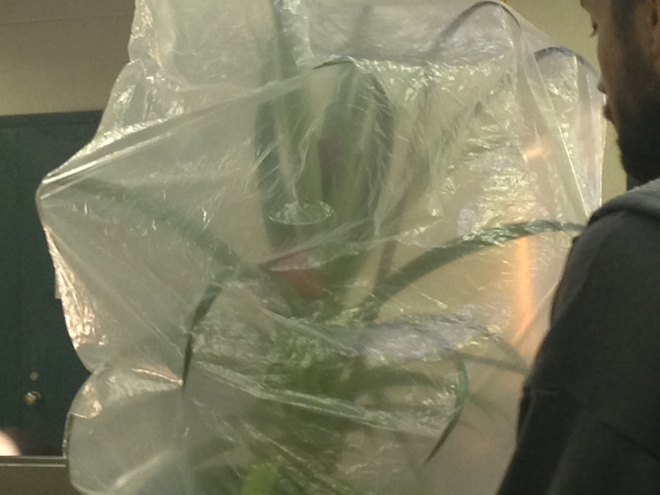After joining the Horticulture Club, and previously knowing very minimal about plants and how to care for them, we have learned so much. The Horticulture Club aims to bring people together to educate, learn, explore and have fun with plants.
Activity 1: Dinosaur Planters
An activity that we had the privilege of participating in was planting grass and moss into wire frames that were in the shapes of fun animals and dinosaurs! We got to work on the Brachiosaurus shaped frame. We were instructed to start by emptying the old dirt that had been unchanged for the past 20 years of use, and to pack it full with fresh new dirt.
We were then able to plant some grass seeds into the dirt, and were encouraged to make fun designs with it! We then learned how we can grow our own moss, which was very interesting. We observed as some of the executive members of the group explained that when you put equal parts of buttermilk and water into a blender, and then add a bit of existing moss (dead or alive) and blend it up, you can then pour or paint this sludge mixture onto dirt- or whatever you please! Moss grows best in areas with more shade, and misted with water.
We decided that our dinosaur would look best with a grass-y spikey Mohawk, beard and fuzzy boots, with a mossy body. It will be excited to see the outcome once the seeds start sprouting and growing! It was a great activity to get everyone’s hands dirty, and learn how to re-purpose old items into new life to decorate a space.
(long post ahead, click to read more)
Activity 2: Plant Sale
Every year the Horticulture Club attends the Greenhouse Conference in Niagara, and offers its members free admission for helping out. Once the conference is done, there are a tonne of plants up for grabs and the Horticulture Club uses this opportunity to collect and sell them to fund their activities for the year. It’s a win-win-win, because the club got the plants at the cost their hard work, we can sell them for prices cheaper than traditional stores might, so students can get great plants for a good price, and the club can then provide great activities at little to no cost to their members!
This year we also picked up a bunch of organic, greenhouse-grown vegetables that – because you need a permit to sell food on campus – went free to any volunteers.
Once the plant sale was done for the day, the left-over vegetables were donated to the local food bank and some of the plants too!
Activity 3: Growing tropical fruit for personal use in your home
The Horticulture Club runs many small workshop, and this specific week we learned how to grow your own tropical fruit from seed (and planted some of our own!).
Our group planted kiwi seeds. We needed to remove the seeds from the fruit and clean them off so that they were free from any goop that might cause rotting. We collected a lot, so that we can guarantee some will start to grow. Then we planted them in a plastic bag with paper towel and a bit of water to get them started before we pot them.
The most interesting fruit we talked about was the pineapple, which is very difficult to grow if you are not an industrial producer and not living in the tropics. One executive member – Teles – shared his experience growing a pineapple from an existing fruit. You can start a pineapple plant by twisting off the greenery of a pineapple you buy at the grocery store and planting it in some soil. It can take about a year for the plant to reach a size suitable for growing fruit. Once it is big enough to support a fruit, you can stimulate the fruit to start growing by sitting apples on the plant and loosely covering it with a plastic bag to ensure the apples release their ethylene gas, which will stimulate your pineapple.

Once the fruit begins to grow, it could take another year before it is ready to harvest. One single fruit grows on top of your plant – make sure you don’t harvest before it is ripe, because once picked it will not ripen any further!





Leave a Reply
You must be logged in to post a comment.